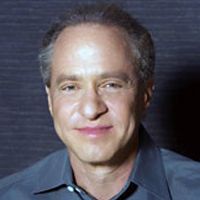RAY KURZWEIL was the principal developer of the first omni-font optical character recognition, the first print-to-speech reading machine for the blind, the first CCD flat-bed scanner, the first text-to-speech synthesizer, the first music synthesizer capable of recreating the grand piano and other orchestral instruments, and the first commercially marketed large vocabulary speech recognition. Ray has successfully founded, developed, and sold four AI businesses in OCR, music synthesis, speech recognition, and reading technology. All of these technologies continue today as market leaders. Ray Kurzweil received the $500,000 Lemelson-MIT Prize, the world's largest award in invention and innovation. He also received the 1999 National Medal of Technology, the nation's highest honor in technology, from President Clinton in a White House ceremony. He has also received scores of other national and international awards, including the 1994 Dickson Prize (Carnegie Mellon University's top science prize), Engineer of the Year from Design News, Inventor of the Year from MIT, and the Grace Murray Hopper Award from the Association for Computing Machinery. He has received ten honorary Doctorates and honors from three U.S. presidents. He has received seven national and international film awards. He is the author of The Age of Intelligent Machines; The Age of Spiritual Machines, When Computers Exceed Human Intelligence; The Singularity Is Near: When Humans Transcend Biology; and coauthor (with Terry Grossman, M.D.) of Fantastic Voyage: Live Long Enough to Live Forever.
Ray Kurzweil
Ray Kurzweil
Principal Developer of the first omni-font optical character recognition







